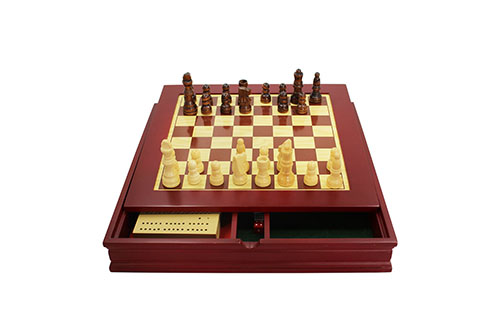04th. September, 2020
The origin
Backgammon is one of the oldest games that exist with Go and Chess. It is about 5,000 years old and probably originated in what is now Iraq - formerly Mesopotamia. The latest evidence to support this was found when these very early dice (made from human bones) were found in the area.
Boards with 24 points and 30 draughts (or pieces or pieces) have been around for a long time, but games have not always been called backgammon. Other games that use the same board are Senet and Mancala. The Romans were the first to make it truly popular. Their version was called Duodecum Scripta et Tabulae or Tables for short.
Over the years, there have been different rules depending on an individual's social level - and this is true of many recreational activities.
You can track the history of any game by looking for artistic and literary references. The early literature is mentioned in Joe Uc's Canterbury Tales: Shakespeare's Ralph's Lost.
The word backgammon first appeared in 1645.No one knows the origin of the name, but most scholars agree that the word backgammon probably comes from Middle English baec = back and gamen = game.
Backlashes appeared in art throughout the second millennium, most notably in Hieronymus Bosch's "Garden of The Earth" and Pieter Brueghel's "Triumph of Death."It often appears in bistro Settings and fights often break out - I wonder why? This is Steen's "backgammon battle" :
The game late in one thousand continued to, but because of gambling, it has been with the authorities and want to clamp down on the game's church continuous struggle - and some parts of the world today is not too similar, especially since the U.S. brings in its cruel and absurd Internet gambling laws (of course, for the world, they have few?)

Backgammon
Popular throughout the Victorian era, popular at country house weekend parties.
But by the early 1920s, the game had lost its appeal. In the roaring Twenties of New York City, RACES were too long to bet (and win) a lot of money. What to do?
The arrival of the double
Whether the game survived or not, we can only guess, but sometime around 1925 or 1926, two things happened almost always at the same time that changed the game forever.
The first and most important event occurred when some genius (or perhaps a group of people) in New York or Boston came up with the idea of doubling the stakes. We must assume that rework was invented at the same time, and there is no evidence to the contrary to suggest otherwise. Unfortunately, despite extensive research, we don't know who actually invented this concept, so all we can do is thank you very much!
Specifically, there is no record of the arrival time of the double cube.
The second thing was the advent of the multiplayer version, which even in the 1920s was always referred to as "chouette".Chouette is a French hooting owl, a bird of many species, so we can see how aptly named it is! It was first used in the card game Picquet.
Now, not only has the stakes doubled, but the profits and losses have doubled as more players enter the game! Backgammon became the perfect game of the 1920s.
It is safe to say that while doubling solves today's backgammon problem and introduces a whole new level of skill, it was initially poorly understood. If you read any book from that era, you will indeed find some very dubious Suggestions. Until Crawford and Jacoby published Backgammon in 1970, no book had explained the basic concept of the 25% water point! Georges Mabardi, author of Vanity Fair's "Backgammon Win" (1930), took the view that "no doubles can be accepted if two absolutely perfect players compete."Close, but no cigar!
Similarly, the early rules of chouettes are not very similar to today's game, which involves multiple cubes, but it created a form of play that is still the most exciting way to play a Backgammon Set today.
It is not clear how fast the doubles and harps crossed the Atlantic, but no comparable British backgammon book dates back to the 1920s and 1930s.
Previous: None
NEXT: None
Phone: +86 13537198388
E-mail: [email protected]
No. 13 Zhan North Road, Baisha Village, Humen Town,Dongguan City, Guangdong Province, China